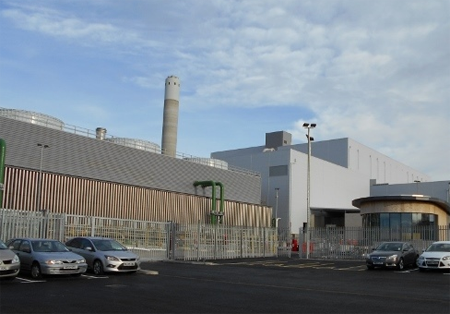Viridor looks to amend Runcorn incineration permit
One of the UK’s major waste management companies, Viridor is seeking to increase the amount of waste handled by its Runcorn energy from waste facility by 250,000 tonnes per annum.
And, in its application for a permit to increase its throughput of household and commercial waste at the plant, which is through four furnaces, it has conceded that emissions limits for carbon monoxide have been exceeded, albeit at levels that ‘pose no risk to human health or to the environment’ [updated 23 October].

Viridor’s Runcorn energy from waste facility
In an application to “substantially vary” its permit, the waste and recycling company has told the Environment Agency that it wants to increase the quantity of permitted waste on site from 850,000 tonnes per annum to 1.1 million tonnes. This would result in 1.04 million tonnes being incinerated, with the remainder being “largely moisture which evaporates from the bunker before the waste is treated”, the company explained.
Capacity
Viridor reports that the plant is running well and as a consequence it has been possible to increase the rating of the furnaces, allowing them to burn slightly more waste. And, the calorific value of the incoming waste is slightly lower than initially expected and is expected to reduce further, due to improved recycling of plastics.
The company is also seeking to change the way its emissions are monitored to help end breaches of regulations.
It says that there has been “some non-compliance” because occasional short terms peaks in carbon monoxide have had a disproportionate impact on the average. A permit explanation document notes: “These peaks are extremely short lived and will not impact on air quality. They pose no risk to human health or to the environment.”
Criteria
The documents note that “Annex VI, Part 8 of the Industrial Emissions Directive sets out the criteria for determining compliance with emission limit values at Waste Incineration Plants. For carbon monoxide compliance can be determined by either: demonstrating that all of the half hour average values measured during a 24 hour period comply with the limit (100mg/Nm3) or demonstrating that 95% of ten minute averages of a 24 hour period comply with the limit (150mg/Nm3).”
Consequently to enable Viridor to be “fully compliant” with its permit, the company wants the Agency to change the compliance limit from a half hourly average limit to an alternative 10 minute average limit. Virdor notes that the Environment Agency has agreed to this “alternative method of measurement for Viridor’s EfW facilities at Lakeside, Bolton, Ardley and Trident Park.
The permit plans also make reference to an averaging of emissions from the four chimneys so that if one is above limits, an average will mean the plant conforms. The permit plans say “the application seeks to amend the emission limit for carbon monoxide, as discussed and agreed with the Environment Agency and to revise the way in which compliance with the emission standards is assessed so that it applies to an average across each of the four flues within the stack. Neither of these changes will result in any change to the conclusions drawn when the permit was issued and the local air quality will remain fully protected.”
Viridor
Speaking about the application, Roy Griffin Viridor’s head of operations (North), said: “Since the plant opened in 2015, our team has steadily improved its performance. We are now able to turn more waste into energy, that would otherwise go straight to landfill, and reduce the UK’s reliance on fossil fuels.
“The results of our recent trials of additional throughput have shown that the plant is capable of operating for longer periods of time with fewer maintenance breaks which means that we can maximise the environmental opportunities of the facility.”







 Network
Network